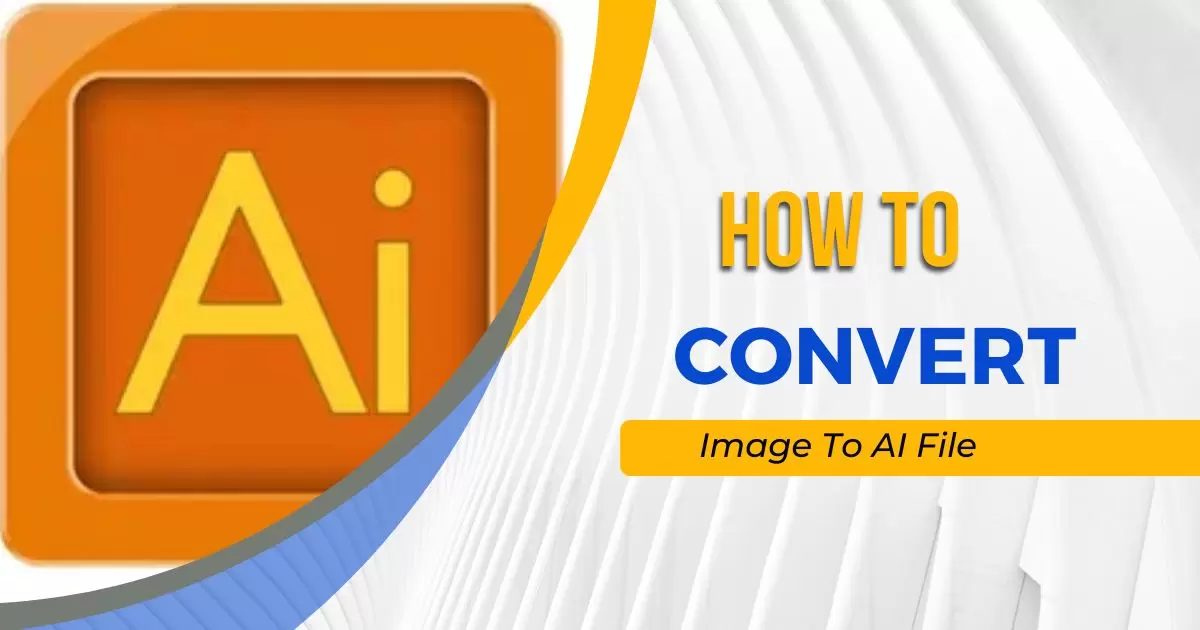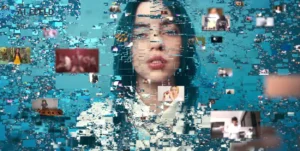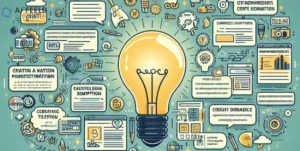You have a stunning image, but you need to enhance its elements and scalability without compromising quality. This is where the conversion of images to AI files becomes essential. AI (Adobe Illustrator) files are vector based, allowing for scalability without compromising image quality.
Ever wondered how to change image into an AI file? It’s simple. Converting an image to an AI file helps make the picture easier to change and use in lots of cool ways. Imagine making a small picture really big without getting blurry. That’s what an AI file does. Let’s find out how to convert image to an AI file and make pictures super awesome.
In the world of digital design, the need for flexible and scalable file formats is paramount. One such format gaining immense popularity is the AI file. This article aims to explore the process of converting images into AI files, elucidating the significance of this transformation.
What is an AI file?
An AI file is a type of digital file format primarily used by Adobe Illustrator, a popular graphic design software. It stands for Adobe Illustrator Artwork and is known for its vector based characteristics. This format is specifically designed to store artwork created within Adobe Illustrator, preserving the quality and scalability of images, shapes, and text.
AI files can contain multiple layers, enabling designers to work on various elements separately. They support both simple and complex designs, allowing for easy manipulation and editing of graphical content. AI files are widely used in graphic design, logo creation, illustrations, and various print and digital media applications due to their adaptability and versatility.
Importance and advantages of using AI format
The AI (Adobe Illustrator) format is vital for preserving vector based graphics, ensuring scalability without losing quality. It offers advantages in design flexibility, enabling easy editing and manipulation of elements within the artwork. AI formats’ compatibility with various design software makes it a preferred choice for professionals, ensuring seamless collaboration and easy integration into different projects. Converting a PDF to an AI file can further enhance this compatibility, allowing for easier editing and manipulation.
Step by step guide to converting images to AI format
Certainly, here’s a step by step guide in bullet points for converting images to AI format:
Selecting the Image: Choose a high quality image in a supported format (JPEG, PNG, etc.) for conversion.
Opening Adobe Illustrator: Launch Adobe Illustrator software on your computer.
Import the Image: Use the File menu to select Place or Import to add the image into Illustrator.
Manual Tracing (if needed): Use the Pen Tool to manually trace the image for precision or skip to Image Trace for automatic conversion.
Using Image Trace: Click on the image, then select Image Trace to automatically convert it into vector format.
Adjusting Image Trace Settings: Modify settings like threshold, paths, and colors to refine the conversion quality.
Save as AI File: After conversion, go to File and select Save As. Choose Adobe Illustrator (.AI) as the format to save your file in AI format.
Check and Edit: Open the saved AI file to verify the conversion and make any necessary adjustments.
Following these steps will help you successfully convert an image to an AI file using Adobe Illustrator.
Different methods to convert images to AI files
There are a couple of ways to change pictures into AI files. One way is manual tracing, where you carefully draw over the image using special software. It takes time but makes the picture super clear. Another way is using software like Adobe Illustrator, which helps change images into AI files quickly and easily. Both methods have their own pros and cons, but they’re cool ways to get your images into AI format.
Manual Tracing and Conversion
When considering the conversion of images to AI files, manual tracing is a fundamental method. This process involves meticulously tracing the image using design software, creating vector paths that mimic the original image. Although time consuming, manual tracing ensures precision. It requires expertise and may not be suitable for intricate images.
Detailed steps involved in manual tracing
Manual tracing involves using tools like the Pen Tool in software such as Adobe Illustrator to draw vector paths over an image. Firstly, open the image in the software and select the Pen Tool. Then, trace the contours and shapes of the image meticulously, creating anchor points to form the desired shapes. Adjust the curves and lines by manipulating the anchor points until the entire image is accurately traced.
Pros and cons of manual conversion
Manual conversion, like using the Pen Tool in software such as Adobe Illustrator, offers precision and control in recreating images as vectors. It allows for accurate tracing and customization, maintaining the quality of the final output. Manual conversion can be time consuming, especially for complex images, and requires expertise in using the tools effectively. It may also be challenging to replicate intricate details, and the process can be labor intensive. Despite these drawbacks, the manual method ensures a high level of accuracy and customization in the conversion process.
Using Software for Conversion

An efficient alternative involves using software like Adobe Illustrator. This software simplifies the process by offering tools that automatically convert images into AI files. Adobe Illustrator provides a user friendly interface and precise tracing options, allowing users to preserve image quality while achieving the desired format.
Benefits of using Adobe Illustrator or similar software
Using Adobe Illustrator or similar software offers a range of benefits, providing powerful tools for creating and editing vector graphics, precise control over designs, versatile file formats, and the ability to produce high quality artwork suitable for various applications like logos, illustrations, and print materials.
Step by step guide to using software for conversion
A step by step guide to using software for image conversion involves opening the desired image file in the chosen program, selecting the conversion option, adjusting settings if necessary, and saving the file in the desired format such as AI, providing a seamless process for transforming images.
Tips for achieving high quality AI files
To create high quality AI files, it’s essential to start with a high resolution image. When using Adobe Illustrator, select the appropriate settings for image tracing to maintain accuracy and detail. Remember to adjust the settings within the software for optimal results.
It’s crucial to refine and clean up the traced paths for a more polished final AI file. Regularly saving your progress and working with layers can also aid in preserving the original image and make edits more manageable.
Saving as an AI File
When saving a file as an AI (Adobe Illustrator) format, it preserves the vector data and editing capabilities, enabling future modifications to the image. Adobe Illustrator offers options to save in different versions of the AI format, ensuring compatibility.
These files can retain intricate details and various design elements, making them suitable for professional graphic design and print work. Saving as an AI file maintains the integrity of the artwork, allowing for scalable and editable graphics without loss of quality or resolution.
Alternative Tools for Image to AI Conversion
There are various alternative tools beyond Adobe Illustrator for converting images to AI format, such as Inkscape, CorelDRAW, and online converters like CloudConvert and Zamzar. Here’s a simple table illustrating some features of these tools:
| Tool | Supported Platforms | Image Trace Function | Cost |
| Inkscape | Windows, macOS, Linux | Manual tracing | Free |
| CorelDRAW | Windows | Advanced tracing tools | Paid |
| CloudConvert | Web based | Automated conversion | Free/Paid |
| Zamzar | Web based | Automated conversion | Free/Paid |
Advantages of using AI files over other formats
- AI files, being vector based, offer scalability without losing quality, allowing for resizing without pixelation or distortion.
- These files support various editing capabilities, enabling easy modification of individual elements within the image.
- AI format allows for precise control over shapes, colors, and other design elements due to its vector nature.
- Compatibility across different Adobe software makes AI files versatile and usable in various design applications.
- As a preferred format for professional designers, AI files maintain their high quality and integrity, making them ideal for printing and digital design projects.
FAQs
How do I turn an image into AI?
Begin by selecting and uploading your desired image onto the Pica AI image generator website. Then, opt for your preferred AI art style from a range of options like oil painting, watercolor, sketch, or futuristic cyberpunk before clicking the ‘Generate’ button to create your artwork.
What are the key considerations for a successful image to AI file conversion?
Ensure high quality source images, use precise software tools, and address image details for a successful conversion.
Can you convert a JPEG to an AI file?
MConverter facilitates bulk conversion of numerous JPEG files to AI in one go, supporting drag and drop functionality for entire folders of JPEGs. Additionally, you can paste copied JPEG files or folders using Ctrl+V for seamless conversion.
Conclusion
Mastering how to convert images to AI files expands creative possibilities. Understanding the process using software like Adobe Illustrator helps transform pictures into versatile AI graphics. Whether tracing manually or using automated tools, this conversion process unlocks the potential for scalable, high quality designs.
Learning these techniques empowers efficient handling of image formats, encouraging seamless transitions from JPEGs or other formats to the dynamic AI format, enabling enhanced editing and professional grade design possibilities.











